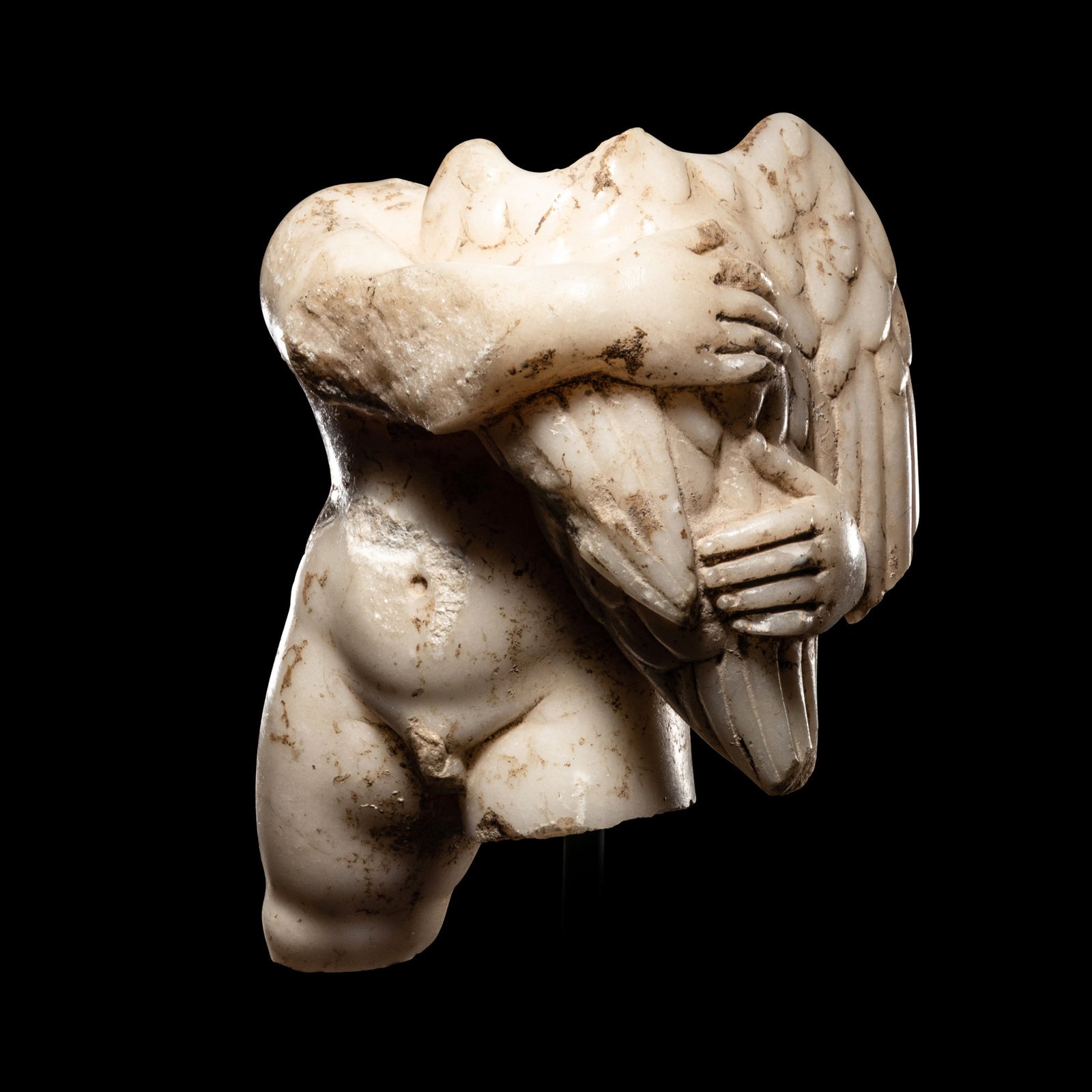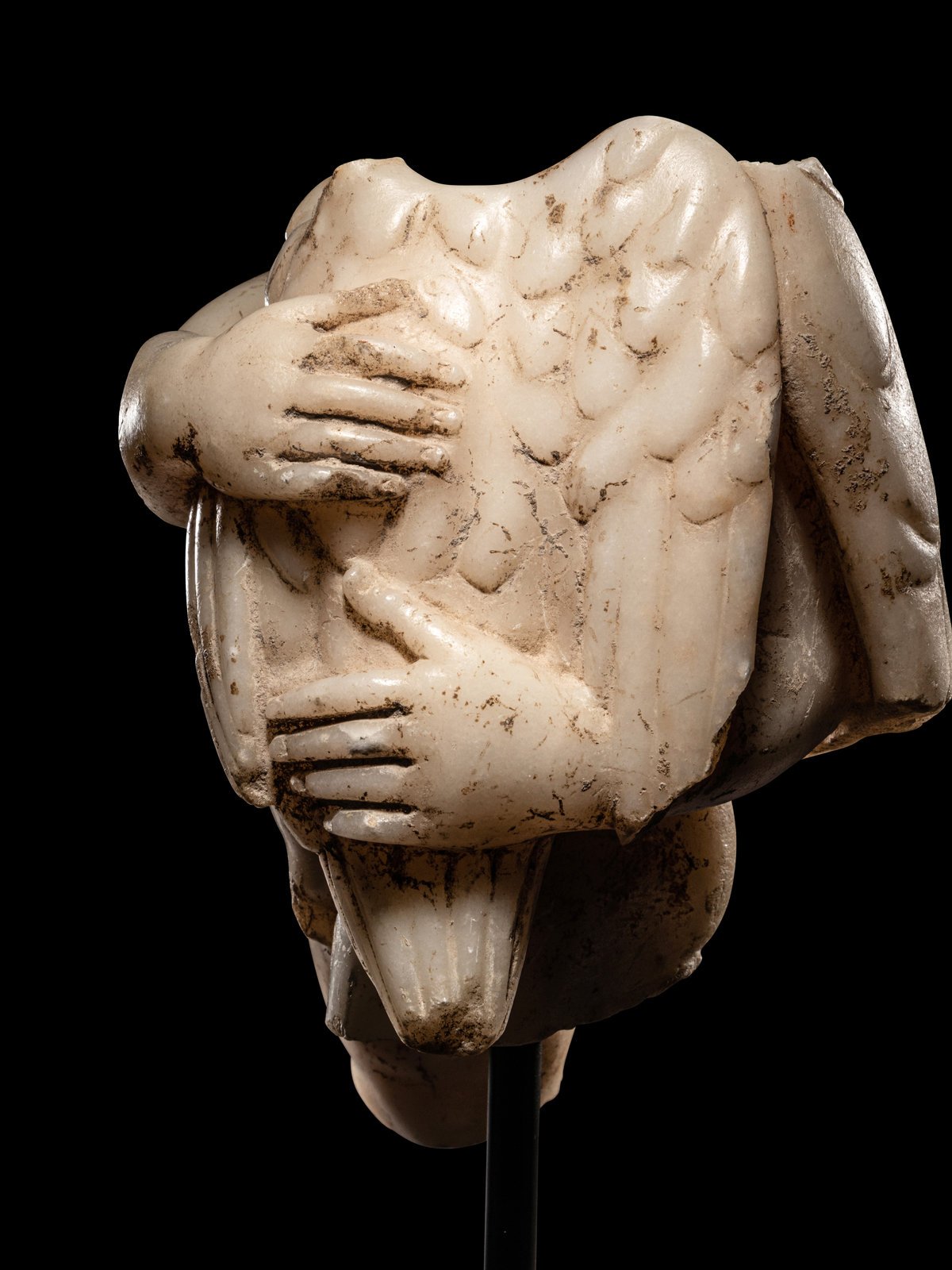Roman Marbled Glass Unguentarium
Roman Marbled Glass Unguentarium
Roman, 1st century A.D.
Marbled Glass
H: 8.3 cm (3.2 in)
Serial: B0016118
Provenance: Ex- Weprin family collection, NY, acquired between the 1970’s – 1991; thence by descent.
The vessel was made of translucent blue glass with veins of opaque white glass; it has a horizontal rim, cylindrical neck, and a piriform body; the bottom is flat.
The technique of creating these color bands tends to imitate the structuring of the vessels carved from the natural stones such as agate, sardonyx or onyx; that is why this class is called “onyx” or “marbled” glass. The appearance of marbled glass piece may easily deceive - it is a real marvel of the Late Hellenistic – Roman technique of blown glass.
The vessel is typical for the category of vessels that served as containers for perfumed oils or pharmaceutical balsams - in Latin called unguentaria (sing. unguentarium), and made in a variety of materials. The shape of the bottle is logical in design: the wide body containing an amount of liquid is narrowing toward the upper portion; the slender neck facilitates the flow of liquid, until it appears through the mouth, at the same time it helps to regulate the flow letting the use of a very little amount of precious oil at a time. A special long stirring rod often made of twisted glass was employed to extract just a necessary amount from the container to avoid any wasting of precious oil. As an object of everyday use, this vessel is particularly beautiful. The contrasting effect of translucent and opaque colors makes it one of the most attractive among the other bottles of color-band glass.










